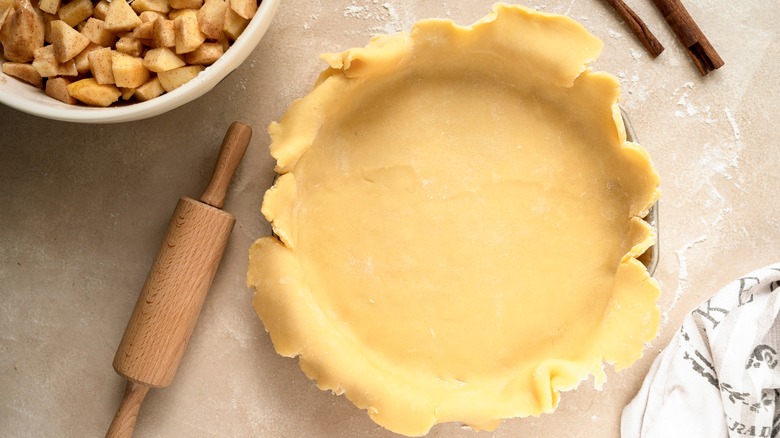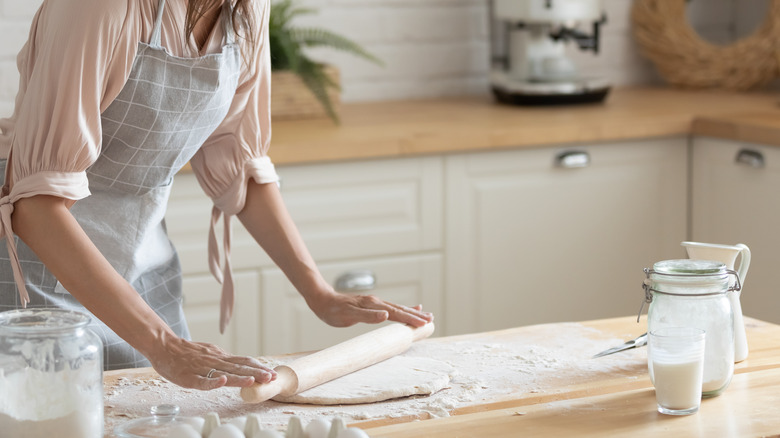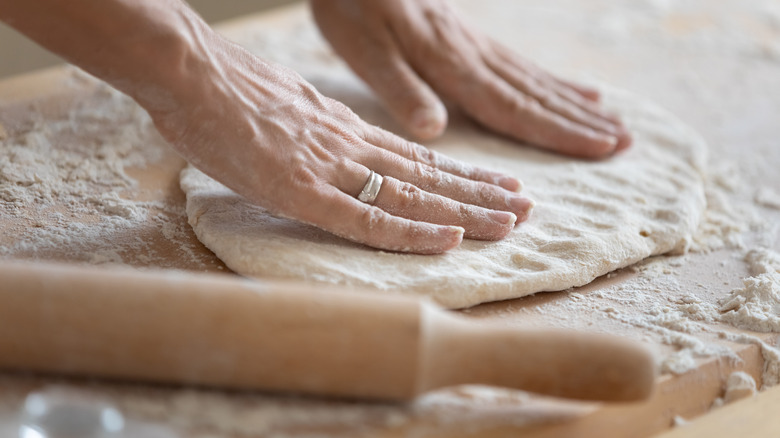The Trick For Preventing Sticky Pie Dough
Despite the fact that homemade is usually better, there's no shame in using store-bought pie dough. After all, even Alton Brown and Ina Garten admit to always keeping the product on hand. It may be a convenient and reasonably tasty option, but when you want your pie crust to have that fresh, buttery flavor, making it from scratch is the only way to go. Unfortunately, it's not always the easiest to achieve.
Add room temperature rather than chilled butter, and you'll get a hard crust instead of a flaky one, Bon Appétit points out. A similar effect happens if you use too much flour, Baking Kneads notes. Even if you roll the dough out too thin, or unevenly, the final outcome will suffer, being burned on one end, yet undercooked on the other. Quite possibly the most frustrating mishap however is when the pie dough is sticky because it can still happen even if you use the right ratios of all the ingredients.
Why does pie dough get sticky?
Ever roll out your pie dough only to find that it's sticking to the rolling pin, your hands, and the countertop? This occurrence is an indicator that the dough has too much moisture, and it isn't always the result of adding too much water. As Serious Eats explains, it's more likely that there's nothing wrong with the water ratio of your recipe, and the butter is simply too warm. When making pie dough, you want the butter to act as a solid, not as a liquid. As soon as butter exceeds 73 degrees Fahrenheit, even though it may not appear melted, it starts to take on the properties of a liquid. This ultimately changes the structure of the dough, resulting in a sticky consistency.
Since chilled butter is crucial to a well-made pie crust, you'll want to consider the other ingredients in the dough that might bring its temperature up. Martha Stewart recommends using ice water because it helps the dough retain its coldness. Refrigerating the bowl and rolling pin as well as the dry ingredients doesn't hurt either, Serious Eats adds.
Troubleshooting sticky pie dough
To keep stickiness at bay, you'll want to make sure to keep your pie dough between 65 and 70 degrees until it's ready for the oven (via Serious Eats). But if you don't have a thermometer on hand or want to err on the side of caution, there's one adjustment you can make to the dough. According to Milk Street founder Christopher Kimball (via Williams Sonoma), a couple of tablespoons of cornstarch and 3 tablespoons of water is all it takes. Combine the two ingredients into a slurry, then microwave it for about 30 seconds. This will create a gel that should keep stickiness to a minimum. Just add it to your dough before the butter, and proceed with your recipe as normal.
If you're too far along, don't want to start over, and your dough is already sticky, your best bet is to blast chill the dough in the fridge, The Pan Handler says. After 30 minutes you should be able to roll it out without it sticking. When all else fails, Cook's Illustrated suggests sandwiching the dough between parchment paper so the rolling pin doesn't come in contact with the sticky dough.


